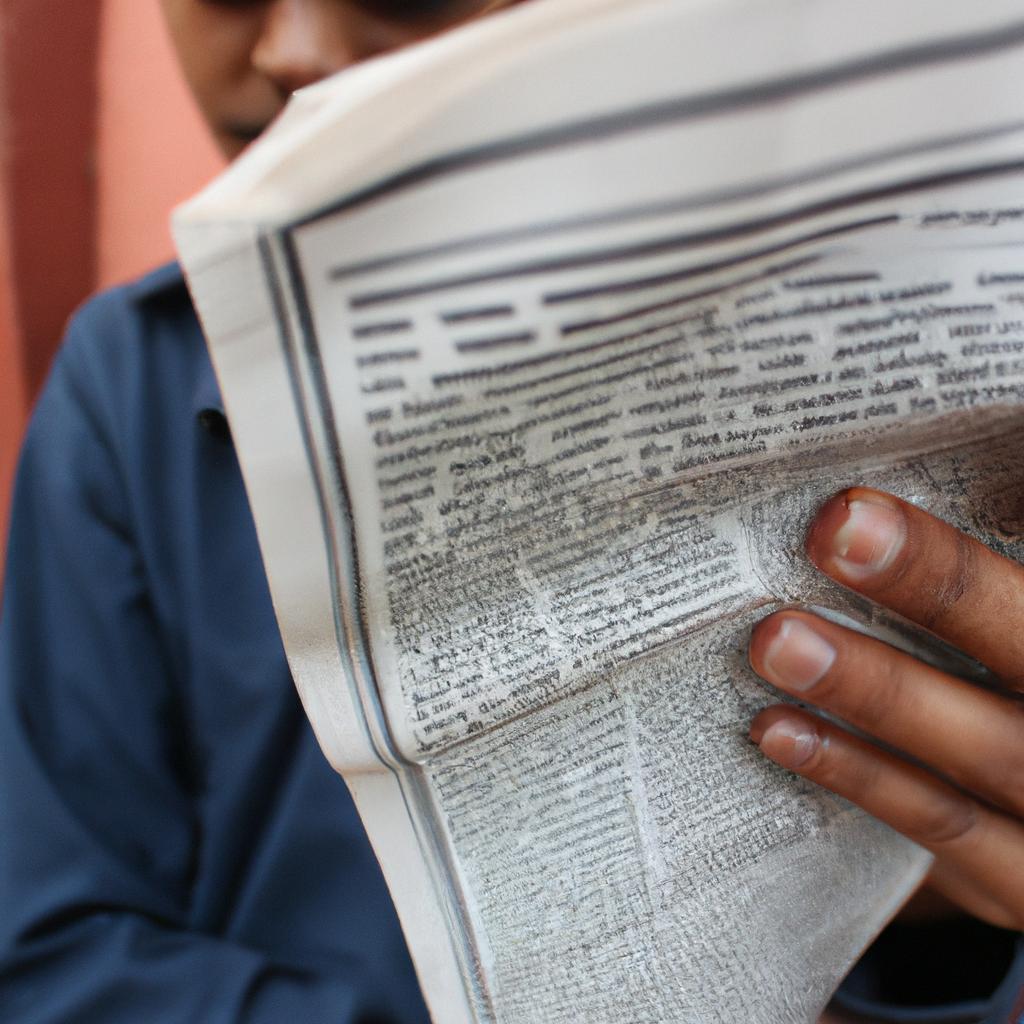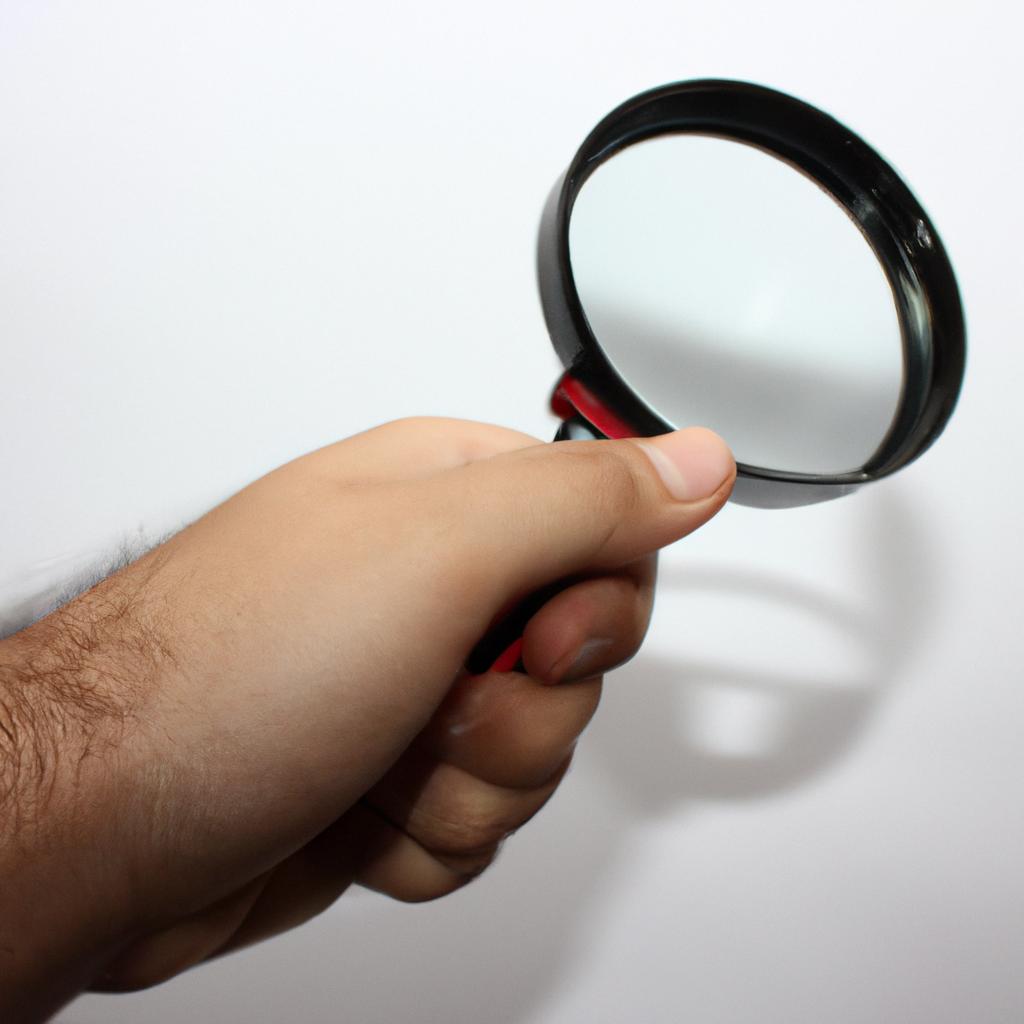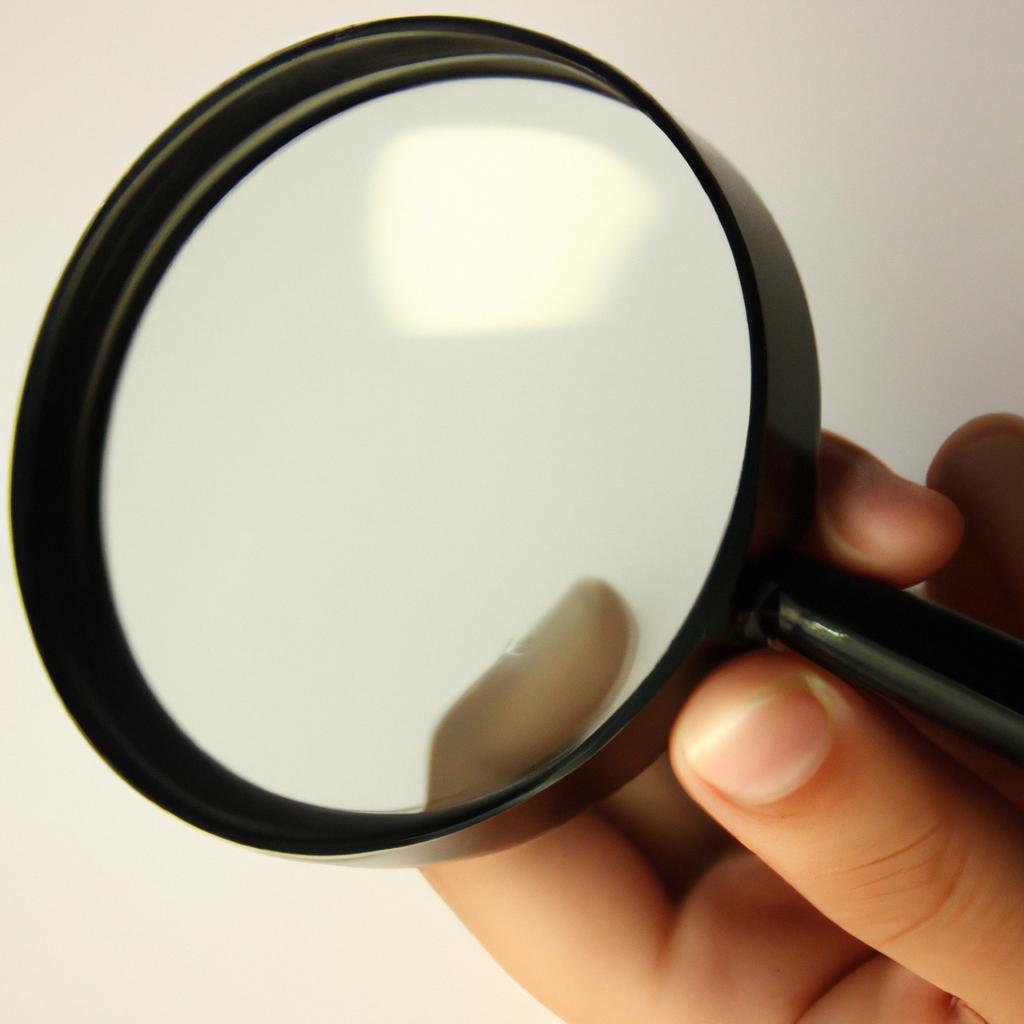The influence of politics in the news media industry is a topic that has garnered significant attention and debate over the years. The role of news outlets as gatekeepers of information, shaping public opinion through their coverage and presentation of events, raises concerns about bias and agenda-setting. One compelling example illustrating this dynamic can be found in the case study of NewsCorp, a global media conglomerate owned by Rupert Murdoch. Critics argue that the company’s ownership structure, combined with its extensive political connections and affiliations, have resulted in biased reporting and an undue influence on public discourse.
In examining the issue of news bias within the context of political influence, it becomes essential to explore how power dynamics shape media content. Media organizations are not devoid of external pressures; they exist within complex networks influenced by politicians, corporations, advertisers, and other stakeholders seeking to promote their interests or maintain control over narratives. This intricate interplay between politics and the news media industry presents challenges for maintaining journalistic integrity and ensuring balanced reporting. Understanding these dynamics requires analyzing factors such as ownership structures, editorial policies, financial dependencies, regulatory frameworks, and individual journalists’ ideologies – all contributing to potential biases in news coverage.
Types of news bias
One example that highlights the prevalence of news bias is the coverage leading up to the 2016 United States presidential election. Throughout this period, various media outlets were accused of favoring either Donald Trump or Hillary Clinton, shaping their narratives to align with their respective political affiliations. This case serves as a starting point for understanding the different types of news bias that can influence public opinion.
News bias can manifest in several ways, often driven by both conscious and unconscious motivations. The following bullet points outline some common forms of news bias:
- Partisan Bias: Occurs when media organizations show a preference for one political party over another, resulting in disproportionate positive or negative coverage.
- Confirmation Bias: Involves selectively presenting information that confirms pre-existing beliefs, effectively reinforcing existing opinions without providing balanced perspectives.
- Commercial Bias: Arises from economic factors such as advertising revenue and ownership interests, which may lead to sensationalism or prioritization of stories that attract larger audiences.
- Ideological Bias: Reflects an alignment with certain ideological viewpoints, potentially influencing how events are framed and interpreted within news reporting.
To illustrate these biases further, consider the following table showcasing hypothetical examples:
| Type of Bias | Example |
|---|---|
| Partisan | A conservative-leaning outlet criticizing progressive policies while downplaying achievements |
| Confirmation | Selectively highlighting instances where a politician’s actions confirm negative stereotypes associated with their party |
| Commercial | Prioritizing celebrity gossip over important policy discussions due to higher viewer interest |
| Ideological | Framing protests against government policies as unpatriotic acts rather than expressions of dissent |
Understanding these types of biases is crucial because they play a significant role in shaping public perception and discourse. Recognizing them allows individuals to critically evaluate news sources and seek out diverse perspectives on any given issue.
With an awareness of the various biases at play, it becomes important to delve deeper into the relationship between political affiliation and news bias. This next section will explore how an individual’s political leanings can influence their perception of news media and vice versa.
Political affiliation and news bias
News bias is an inherent aspect of the media landscape, with various types influencing how information is presented to audiences. One prominent type of news bias is partisan bias, which occurs when news outlets favor a specific political party or ideology in their reporting. To illustrate this, let us consider a hypothetical case study: A news channel consistently portrays one political party in a positive light while portraying its opponents negatively. This biased coverage can significantly impact public perception and shape political discourse.
Understanding the relationship between news bias and political affiliation requires examining several key factors:
- Editorial stance: News organizations often have an editorial stance that aligns with certain ideological viewpoints. This can influence the selection and framing of stories, leading to biased reporting that favors one side over another.
- Journalist’s personal beliefs: While journalists strive for objectivity, it is important to acknowledge that personal beliefs may inadvertently influence their reporting. These biases can manifest in story selection, tone, and even subtle language choices.
- Media ownership: The ownership structure of media outlets can also contribute to news bias. When the owners or top executives have strong political affiliations or interests, they may exert pressure on journalists to promote certain narratives or downplay others.
- Audience demand: Ultimately, media organizations are driven by audience ratings and financial considerations. They may tailor their content to cater to specific demographics or ideological preferences prevalent among their viewership.
To further comprehend these relationships between news bias and political affiliation, we can visualize them using the following table:
| Type of News Bias | Examples |
|---|---|
| Partisan Bias | Favoring one political party over another |
| Confirmation Bias | Selectively presenting information that confirms beliefs |
| Framing Bias | Shaping perceptions through selective story framing |
| Omission Bias | Intentionally leaving out relevant information |
Such biases can have profound implications for public opinion, elections, and societal discourse. It is crucial to critically analyze news sources and be aware of the potential biases they may exhibit.
In the subsequent section, we will delve into another influential aspect in the news media industry: the influence of advertisers on news bias. Understanding this relationship is vital as it sheds light on additional factors that shape how news outlets present information to their audiences.
Influence of advertisers on news bias
Having explored the relationship between political affiliation and news bias, we now turn our attention to another significant factor that can influence news reporting – the role of advertisers. By examining how advertisers exert their influence, we can gain further insights into the complex dynamics shaping news bias within the media industry.
Influence of Advertisers on News Bias:
Advertisers play a crucial role in financing news organizations, often providing substantial revenue streams necessary for their survival. However, this financial dependence also provides advertisers with an opportunity to exercise influence over content creation and presentation. Let us consider a hypothetical example to illustrate this phenomenon:
Imagine a major automobile manufacturer whose primary advertising campaign targets environmentally conscious consumers. This company may have a vested interest in promoting positive stories about electric vehicles while downplaying negative aspects or controversies surrounding traditional gasoline-powered cars. In order to maintain favorable relationships with such advertisers, news organizations might be inclined to tailor their coverage accordingly.
This potential impact of advertisers on news bias raises important questions regarding journalistic integrity and independence. The following bullet points highlight key considerations when examining this issue:
- Financial pressures faced by news organizations create incentives for accommodating advertiser preferences.
- Advertiser-friendly content may compromise objective reporting and limit critical examination of certain industries or products.
- Fear of losing advertising contracts may lead to self-censorship or avoidance of controversial topics.
- Consumers’ trust in unbiased journalism is jeopardized when they perceive undue influence from advertisers.
To better understand the extent of advertiser influence across different media outlets, let’s examine a table showing examples illustrating varying levels of ad-driven biases:
| Media Outlet | Example 1 | Example 2 |
|---|---|---|
| Network TV | Prioritizing entertainment news | Underreporting corporate scandals |
| Online News | Favorable coverage of tech companies | Omitting negative stories about retail giants |
| Print Newspaper | Promoting luxury travel destinations | Ignoring labor rights violations in fashion industry |
These examples serve as a reminder that advertising revenue can significantly impact the content we consume, potentially leading to biased reporting and hidden narratives.
As we delve deeper into understanding the multifaceted nature of news bias, it is crucial to acknowledge another influential factor – government influence on news media. In the following section, we will explore how governments exert control or exert pressure within this realm without compromising journalistic integrity.
[Transition sentence into next section: Government Influence on News Bias]
Government influence on news bias
Advertisers play a significant role in shaping news bias within the media industry. Their influence stems from the financial support they provide to news organizations, which often leads to subtle or explicit pressure to align their coverage with advertisers’ interests. This section will explore the ways in which advertisers exert their influence and how it can contribute to biased reporting.
One example that illustrates this phenomenon is the case of a large multinational corporation that heavily advertises its products across various news outlets. In order to maintain a positive relationship with this advertiser, some news organizations may be inclined to downplay negative stories about the company or avoid covering topics that could potentially harm its reputation. Consequently, crucial information might be omitted from reports, resulting in an imbalanced portrayal of events.
The influence of advertisers on news bias can manifest through several mechanisms:
- Editorial control: Advertisers may demand certain changes or modifications in news content as a condition for continued advertising funding.
- Story selection: Advertisers often have preferences for specific types of stories or themes that align with their target audience’s interests. As a result, news organizations might prioritize these stories over others, leading to an imbalance in coverage.
- Framing: Advertisers may use their leverage to shape the narrative surrounding particular issues by emphasizing certain perspectives while suppressing alternative viewpoints.
- Self-censorship: Out of fear of losing advertising revenue, journalists and editors may self-censor sensitive topics or critical investigations related to influential advertisers.
To further illustrate the impact of advertiser influence on news bias, consider the following table:
| Media Outlet | Primary Advertiser | Coverage Biases |
|---|---|---|
| Outlet A | Corporation X | Positive |
| Outlet B | Corporation Y | Negative |
| Outlet C | Corporation Z | Neutral |
This hypothetical table demonstrates how different primary advertisers can potentially shape the news coverage of various media outlets, leading to biased reporting that aligns with advertisers’ interests.
The influence of advertisers on news bias is a complex issue that warrants careful examination. It raises questions about journalistic integrity and the extent to which commercial considerations compromise the pursuit of objective reporting. As we delve into the role of government influence in the next section, it becomes evident that these external pressures contribute significantly to shaping media narratives.
Transitioning into the subsequent section on “Government Influence on News Bias,” it is crucial to understand how different forces impact news coverage beyond just advertisers’ control.
Role of social media in news bias
Government Influence on News Bias
In addition to government influence, another factor that contributes to news bias is the role of social media. The rise of social media platforms has revolutionized the way people consume and share information. While it has provided a platform for diverse voices and alternative sources of news, it has also created an environment where misinformation and biased content can easily spread.
To illustrate this, let’s consider a hypothetical scenario where a controversial political event occurs. As soon as news about the event breaks, individuals with different political ideologies take to their social media accounts to express their opinions and share articles or posts related to the incident. This instantaneous dissemination of information allows biases to be reinforced within echo chambers, where like-minded individuals interact primarily with others who hold similar views.
The impact of social media on news bias can be seen through several key points:
- Algorithmic biases: Social media platforms use algorithms that tailor users’ feeds based on their preferences and behavior patterns. This can create filter bubbles, limiting exposure to differing viewpoints and reinforcing existing beliefs.
- Viral misinformation: False or misleading information spreads rapidly on social media due to its ease of sharing without proper fact-checking. This phenomenon not only influences public opinion but also shapes narratives in ways that align with particular agendas.
- Amplification of extreme views: Social media provides a virtual space for extreme perspectives to gain traction by attracting followers who are drawn towards sensationalism.
- Echo chamber effect: By interacting mainly with like-minded individuals online, people may become less exposed to opposing viewpoints, leading them to develop more rigid attitudes and reinforcing pre-existing biases.
To further comprehend the complex relationship between news bias and social media influence, we can examine the following table:
| Factors contributing to news bias via social media | Examples |
|---|---|
| Filter bubbles | Users seeing predominantly one-sided content that reinforces personal beliefs |
| Misinformation spreading | Rapid sharing of false or misleading information without proper fact-checking |
| Polarization of public opinion | Amplification of extreme views leading to increased division among society |
| Reinforcement of confirmation bias | Limited exposure to differing viewpoints, resulting in the solidification of pre-existing beliefs |
In conclusion, social media plays a significant role in shaping news bias by contributing to filter bubbles, spreading misinformation, polarizing public opinion, and reinforcing confirmation biases. The instantaneous nature of social media sharing allows biases to be amplified and can influence public perception on various issues. Understanding these dynamics is crucial for individuals seeking a more comprehensive understanding of the news they consume.
Next section: Effects of News Bias on Public Perception
Effects of news bias on public perception
The prevalence of social media platforms has undeniably transformed the landscape of the news media industry, playing a significant role in perpetuating and amplifying news bias. To better understand this phenomenon, let us consider an example: imagine a hypothetical scenario where a major political event occurs, such as an election or a policy decision. As soon as the news breaks, various individuals and organizations take to social media to express their opinions and share information related to the event.
One way in which social media contributes to news bias is through algorithmic filtering. Social media platforms utilize algorithms that curate users’ feeds based on their preferences and interests. This can lead to echo chambers, where people are exposed only to content that aligns with their preexisting beliefs. For instance, if someone holds conservative views and follows like-minded individuals or pages on social media, they may be presented predominantly with conservative perspectives on political events. This reinforces existing biases and limits exposure to diverse viewpoints.
Furthermore, the rapid spread of misinformation via social media exacerbates news bias. False or misleading information can easily go viral without proper fact-checking mechanisms in place. In our hypothetical scenario, suppose a fabricated story about one candidate’s alleged corruption gains traction on social media due to its sensational nature. Even after being debunked by credible sources, it may continue circulating within specific online communities that already harbor negative sentiments towards that candidate. Consequently, these falsehoods contribute to distorting public perception and reinforcing biased narratives.
To fully grasp the impact of social media on news bias, we must acknowledge its influence in shaping public opinion beyond traditional journalistic practices alone. Here is a bullet point list highlighting some key aspects:
- Amplification of polarizing voices
- Creation of filter bubbles
- Reinforcement of confirmation bias
- Proliferation of unverified information
In addition to bullet points, examining data within a table format can also help convey important information. The following table provides a snapshot of the effects of social media on news bias:
| Effects of Social Media on News Bias |
|---|
| Amplification of polarizing voices |
| Proliferation of unverified information |
By understanding these dynamics, it becomes clear that social media’s role in perpetuating news bias is significant and cannot be underestimated.
In conclusion, the emergence and widespread use of social media have introduced new challenges to maintaining unbiased reporting within the news media industry. Algorithmic filtering and misinformation dissemination contribute to echo chambers and distorted public perception. Recognizing these impacts is crucial for both individuals consuming news through social media channels and those involved in producing balanced journalism. As we delve deeper into the effects of news bias on public perception, we can explore potential solutions to counteract this trend.




